#1890s cycling
Explore tagged Tumblr posts
Text

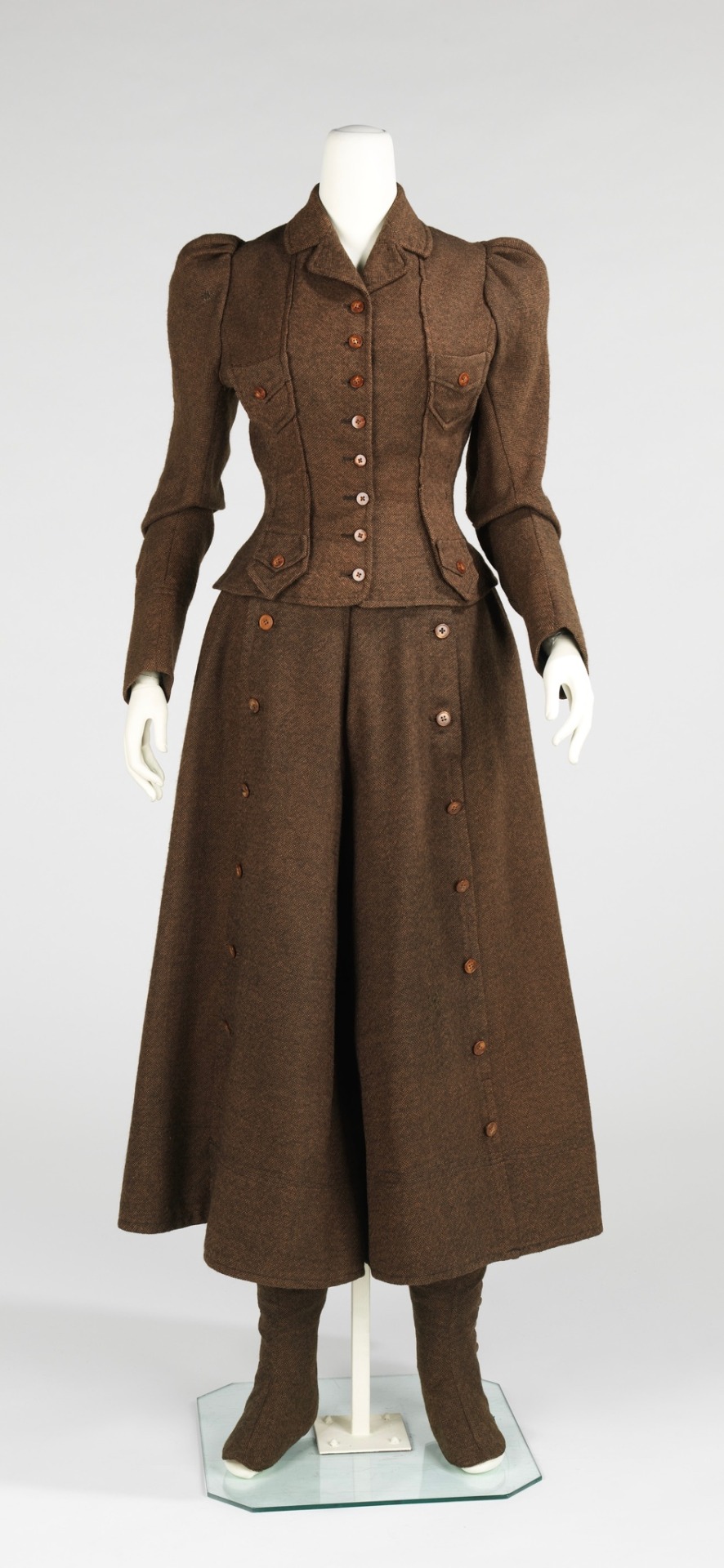
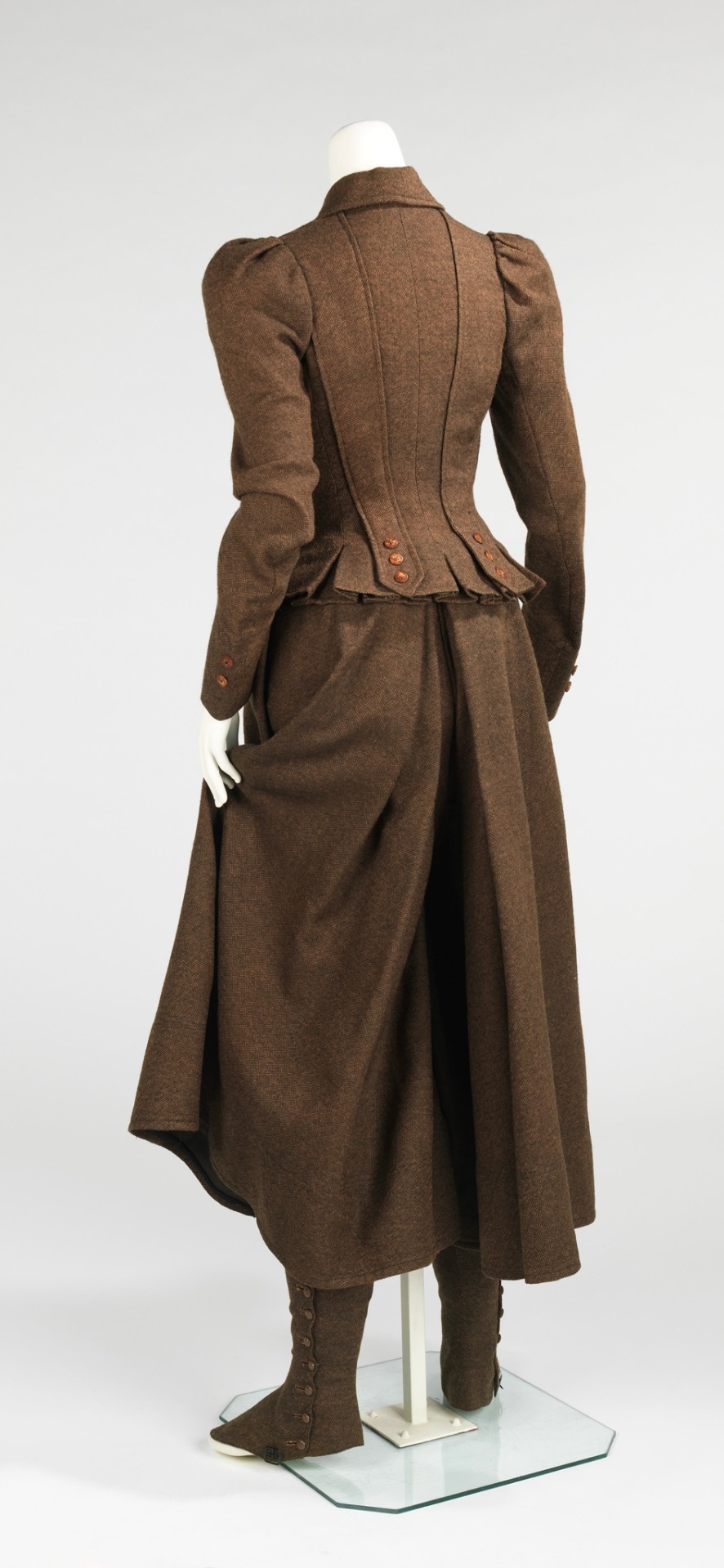
Brown wool cycling suit, 1896-1898, American.
Met Museum.
#brown#wool#womenswear#extant garments#suit#cycling#cycling suit#1890s cycling#1896#1890s#1890s usa#1890s extant garment#19th century#met museum#american
193 notes
·
View notes
Text

"Ordinary bicycle." Cycling for health and pleasure. 1890.
Internet Archive
192 notes
·
View notes
Photo

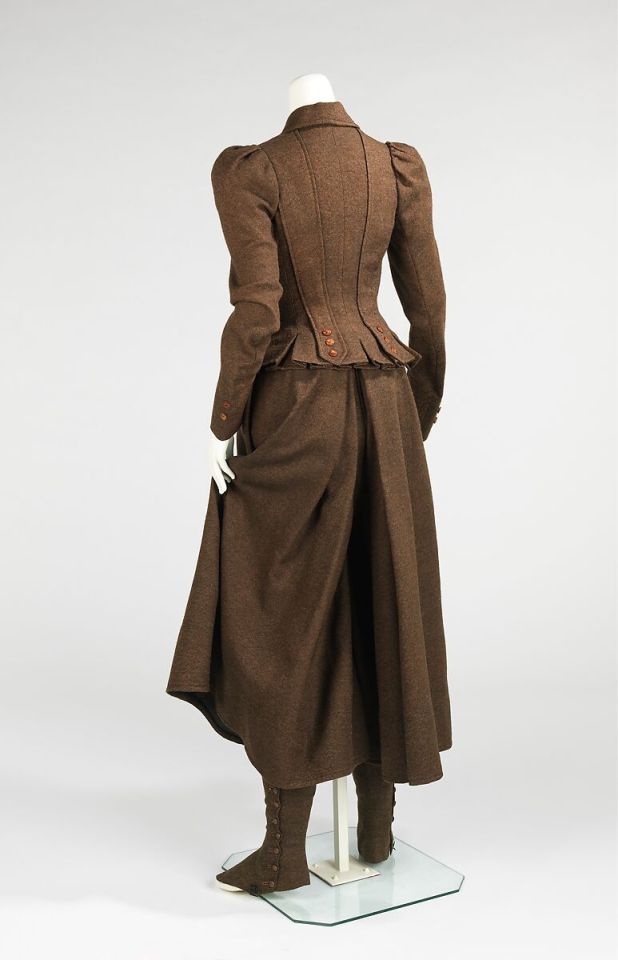
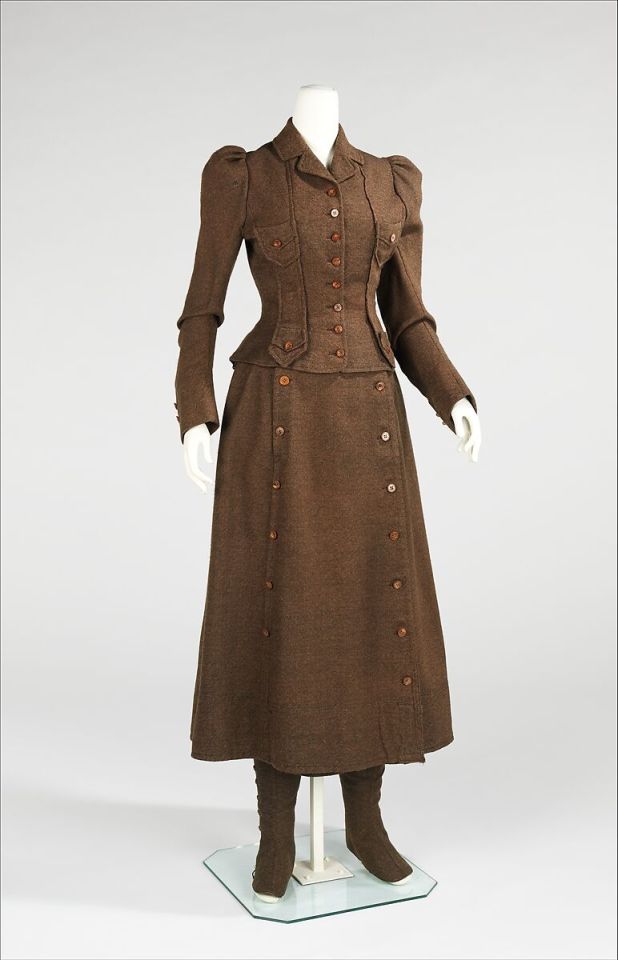
Cycling Suit | c.1896-1898 | American
2K notes
·
View notes
Text
1896























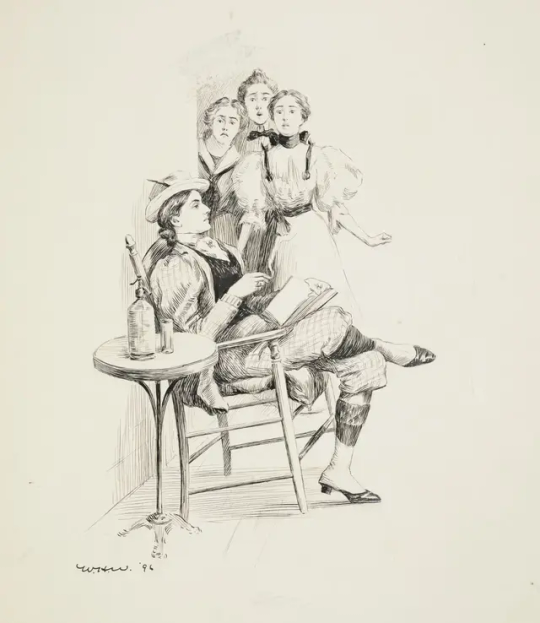
Right: “Oh”, William H. Walker.



Leit: Cycling Suit, Trouville. MET Accession Number: 2009.300.547a, b
Center and Right: Court Presentation Ensemble, probably American, and a photograph of Emily Warren Roebling wearing it. MET Accession Number: 2009.300.941a-e



Left: Bridesmaid Dress, A. F. Jammes. MET Accession Number: C.1.41.14.2
Center and Right: Wedding Dress, House of Worth, and sleeve detail. MET Accession Number: C.1.41.14.1 Death’s Head Buttons!!!
#thought(s) from yours truly#dress history#history#19th century fashion#19th century#1890s#1890s fashion#met#my museum musings#fashion plate(s)#old photograph(s)#cycling#velocipede#1896
90 notes
·
View notes
Photo

Alfred Eberling. Dvortsovaya Embankment, Saint-Petersburg. 1899
I Am Collective Memories • Follow me, — says Visual Ratatosk
#BW#Black and White#Preto e Branco#Noir et Blanc#黒と白#Schwarzweiß#retro#vintage#Alfred Eberling#Dvortsovaya Embankment#Saint-Petersburg#1899#1890s#19 Century#XIX century#bike#cycling#street photography#Photographie de rue#Strassenfotografie#fotografia de rua#ストリートフォトグラフィー#cities#cidades#villes#都市#Stadtbild#paysage urbain#paisagem urbana#シティスケープ
46 notes
·
View notes
Text

Harper's October 1894. Creator: Penfield, Edward, 1866-1925, artist. Image of an advertisement for Harper's magazine October 1894 issue featuring a man cycling and smoking a pipe on a bicycle near the shore in a wooded area with a copy of Harper's in one pocket.
#harper's bazaar#harper's magazine#harper's weekly#pipesmoking#vintagemen#pipemen#vintage men#retro men#pipes#smoking pipe#tobacco pipe#biking#cycling#1890s#bicycling#bicyclist#advertising
39 notes
·
View notes
Text
marvel knew that putting loki and mobius on that two person bike would have been too powerful
#i need bts of them riding it anyway#bfs going on a casual little cycle back in the 1890s#loki season 2#loki laufeyson#mobius#lokius
77 notes
·
View notes
Text






OC-tober 2024, pt. 4
Day #19 - With their significant other: Ahuiliztli & Isandro Juarez
Day #20 - Friend group: Iris Carrey, Erin Lyle, and Blake Lesley-Ibarra
Day #21 - Sport clothes: Kristina “Kitty” Devrees-Delacroix
Day #22 - Working: Venus
Day #23 - The one who died: Yolihuani
Day #24 - Human -> non-human: Esme
#oc-tober#oc-tober 2024#my ocs#original characters#character design#ahuiliztli#isandro juarez#iris carrey#erin lyle#blake lesley-ibarra#kristina devrees-delacroix#venus#yolihuani#esme#otp#draw the squad#historic fashion#19th century fashion#1890s fashion#cycling outfit#dark elf#elves#fantasy creatures#winged creatures#my art#traditional art#artists on tumblr
8 notes
·
View notes
Text

Day #21 - Sport clothes: Kristina "Kitty" Devrees-Delacroix
#oc-tober#oc-tober 2024#my ocs#original characters#kristina devrees-delacroix#19th century fashion#historic fashion#1890s fashion#cycling outfit#my art#traditional art
5 notes
·
View notes
Text
Frederick Winthrop Ramsdell, American Crescent Cycles, 1899

#Frederick Winthrop Ramsdell#American Crescent Cycles#1899#art nouveau#1890s#art#advertising#vehicles
3 notes
·
View notes
Text

Exposition : Royal Cycle Works : manufacturers of high grade wheels, Marshall, Mich., U.S.A. / Royal Cycle Works. Title from cover. Includes illustrations. Forman-Bassett-Hatch Co., 1893.
National Automotive History Collection, Detroit Public Library
#tiger#royal cycle works#1893#marshall#michigan#michigan history#cycles#cycle#19th century#1890s#vintage#detroit public library
45 notes
·
View notes
Text
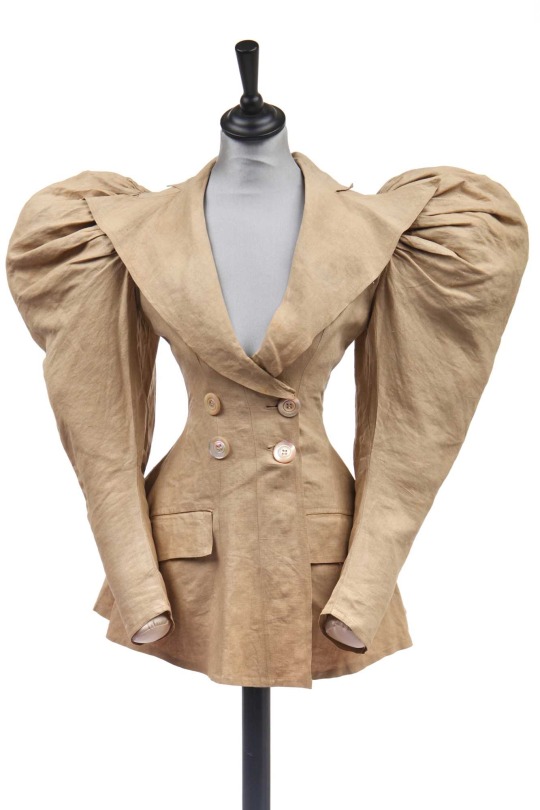
Beige linen bicycling jacket, ca. 1895.
Kerry Taylor Auctions.
#Kerry Taylor auctions#beige#linen#womenswear#extant garments#jacket#19th century#1895#1890s#1890s jacket#1890s extant garment#1890s cycling#cycling
83 notes
·
View notes
Photo
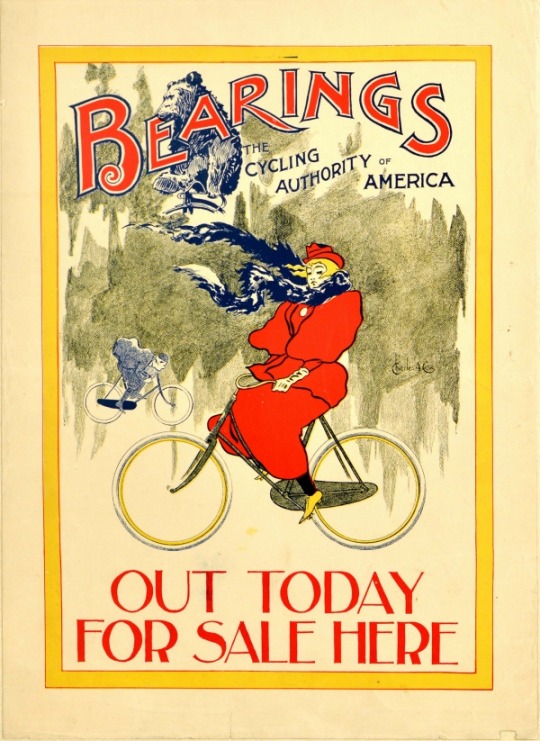
Poster advertising a cycling magazine called ‘Bearings - the cycling authority of America’ (c. 1890). Artwork by Charles A. Cox.
25 notes
·
View notes
Text
— Continuing on to 1895 —
Sorry to those of you who aren’t interested in dress history.
1895














Left: A Friendly Call, William Merritt Chase.
Right: Toronto Public Library Staff, ca. 1895.


Left: Untitled, William H. Walker. William H. Walker did numerous illustrations meant to criticize velocipedestriennes and the “New Woman”. However, some of these illustrations are in keeping with what was being worn, and the women are often stylishly dressed.
Right: Cycling Suit. FIDM Museum. It’s absolutely hideous. My eyes are bleeding. I love it.



Left: Walking Suit, Jacques Doucet. V&A Accession Number: T.15&A-1979
Center: Dress, American. MET Accession Number: 2009.300.2434a-d
Right: Evening Dress, Rouff. MET Accession Number: 2009.300.6477a, b


Left: Sweater, probably American. MET Accession Number: 2009.300.1111 I wish I could wear sweaters without overheating…
Right: Bodice, L. Guiquin. V&A Accession Number: T.271&A-1972 This would be absolutely amazing on Halloween.


Extant example: Evening Dress, Rouff. MET Accession Number: 2009.300.2339a, b



Extant example: Wedding Ensemble, M. L. Doyle (a, b) and H.W. Baldwin Co. (c, d). MET Accession Number: C.1.52.10.1a-d


Extant example: Afternoon Dress, American. MET Accession Number: 2009.300.7174a, b


Extant example: Dress, Labout & Robina. MET Accession Number: 2009.300.670
#thought(s) from yours truly#dress history#history#19th century fashion#19th century#1890s#1890s fashion#1895#v&a museum#met#my museum musings#fashion plate(s)#art#art history#old photograph(s)#library#cycling#velocipede
10 notes
·
View notes
Text
Ok everyone, before you panic, go look up dr.andrealove, drjengunter, and drjenniferlincoln on Instagram they have broken down this subject. But basically, the study is basically a nothing-result. The methodology isn't... Great. But even with the bad methodology and unrealistic conditions of the study, the ammounts of metals found were very low, below consumer food safety limits. They were definitely NOT "concerning levels". Most trace toxic substances found in consumer goods are often due to accidental contamination of raw materials or during the manufacturing process. They are NOT added on purpose. Yes, we should still monitor for safety levels to make sure everything is OK, but that's what regulatory bodies like the FDA and toxicologists do. They aren't just doing nothing all day. Also, metals can often be there on purpose for antimicrobial reasons, as we know silver and copper have such properties, for example, but the sensationalized short videos and news don't seem to care about THAT, huh? Biases.
It isn't like tampon companies are trying to scam and poison us un purpose. (If anything, these results are a lesson in why organic and natural often don't mean anything beyond marketing tactics and how sensationalized and taboo female bodies still are. Weird.) Women, trans men, AFAB, and feminine-presenting people already have a lot to deal with as is without everyone trying to scare us about period products that have been safely used for decades in the modern world.
Yes, we still need more research and funding in gynecology, periods, and women's health, but this article is just bad science, and the news covering it are fearmongering. You can keep using your tampons they're safe!! (Just remember to change your tampons, cups and discs every 8 hours max to avoid toxic shock syndrome.)
(Also, not everyone can or wants to change to a reusable period product for multiple reasons. Check your privilege. Please don't shame people for what they use to deal with their periods. Not everyone has ready access to clean water either.)
Weighing up the pros and cons of different sanitary products requires sound knowledge of what risks and benefits each poses. For the first time, researchers have measured concentrations of various metals in tampons, finding worrying levels of several toxic types, including lead, for which there is no safe level of exposure. The walls of the human vagina are lined with a highly absorptive tissue that has the potential to soak up stray pollutants – like metals – that would circulate in the bloodstream without being filtered by the liver first.
Continue Reading.
#Health#Biology#Arsenic#Epidemiology#Lead#Tampons#Menstrual Cycle#Periods#Toxicology#Fearmongering#bad science#oh the way anything relating female bodies are such big news every damned time#when womens rights are being taken away at every turn#feminicide violence is going up#and trans people are being attacked across the globe#focus on what's important#I knwo we're still behind on a lot of things#but this is also not 1890 anymore#not even 1940 anymore#signal boost#boost#science#your tampons are safe!!!
186 notes
·
View notes
Text

#ai#ストリートフォトグラフィー#saint-petersburg#preto e branco#aiart#paisagem urbana#vintage#villes#photographie de rue#xix century#cycling#retro#1899#art#schwarzweiß#dvortsovaya embankment#都市#alfred eberling#noir et blanc#19 century#street photography#1890s#cities#シティスケープ#bike#digitalart#black and white#stadtbild#bw#paysage urbain
0 notes